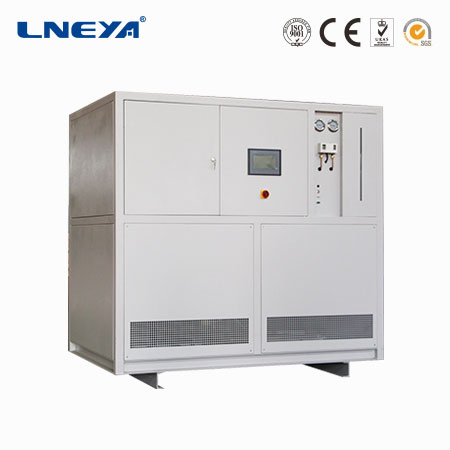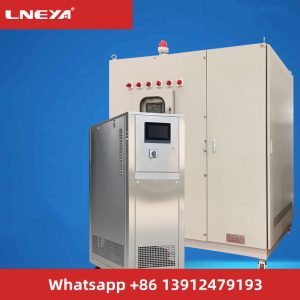Basic Structure of Industrial Water Chiller

Basic structure of industrial water chiller:
Industrial water chiller consists of
compressor, condenser, evaporator, expansion valve and other accessories.
1. Compressor: in the industrial water chiller
system, the compressor is the power to ensure refrigeration. The compressor is
used to increase the pressure of the refrigerant in the system and make the
refrigerant circulate in the refrigeration system to achieve the purpose of
refrigeration.
2. Condenser: high temperature and high
pressure Freon of the refrigeration system enters the condenser after coming
out of the compressor, releases a lot of heat to the cooling medium, and then
is cooled and liquefied.
3. Evaporator: when the Freon liquid of the
refrigeration system enters the expansion valve for throttling and is sent to
the evaporator, it belongs to the vaporization process. At this time, it needs
to absorb a lot of heat to gradually reduce the valence and mass temperature to
achieve the effect of refrigeration and cooling.
4. Expansion valve: in the refrigerant
system flow chart of the industrial water chiller, we found that there is a
small part between the outlet of the condenser and the inlet of the evaporator,
which is called thermal expansion valve. It is a throttling and depressurizing
part to reduce the condensation pressure of the refrigerant to the evaporation
pressure. Therefore, its role in the refrigeration system is essential. It is
connected with the refrigeration compressor, evaporator, condenser It is also
called the four components of the refrigeration system.
5. Other accessories: including drying
filter and high and low pressure controller. The drying filter is non
detachable. The internal structure adopts molecular sieve structure, which can
remove a small amount of impurities and water in the pipeline, so as to purify
the system. The high and low pressure controller plays a protective role in the
refrigeration system.
Recommandations connexes
-
Méthodes permettant aux fabricants de refroidisseurs de garantir la qualité de leurs produits
1010Avant de produire un refroidisseur industriel, le fabricant de refroidisseurs tient compte de l'industrie concernée, de la capacité de réfrigération, de la structure, etc., et de l'environnement d'utilisation réel pendant la conception et l'assemblage afin d'optimiser certaines fonctions. Dans l'ord...
Voir les détails -
Where will the reactor be used? How about the reactor temperature control system?
892Generally, non professionals should be confused about the reactor. The reactor is composed of reactor body, reactor cover, jacket, agitator, transmission device, shaft seal device, support, etc. It is generally understood as a container with physi...
Voir les détails -
Comment éviter les erreurs opérationnelles dans les systèmes de régulation de la température par transfert de chaleur ?
1010Pendant le fonctionnement du système de contrôle de la température de transfert de chaleur, si le système de contrôle de la température de transfert de chaleur tombe en panne, la raison principale en est l'erreur de fonctionnement. Comment éviter les erreurs ? 1. Le fonctionnement du système de contrôle de la température de transfert de la chaleur des fluides...
Voir les détails -
Avantages des thermostats pour réacteurs
975The process thermostat of the reaction kettle can control the temperature of the medium and the temperature of the material. It is suitable for users who require more accurate reaction technology and process control. It is mainly used in...
Voir les détails
 LNEYA Industrial Chillers Fabricant Fournisseur
LNEYA Industrial Chillers Fabricant Fournisseur













